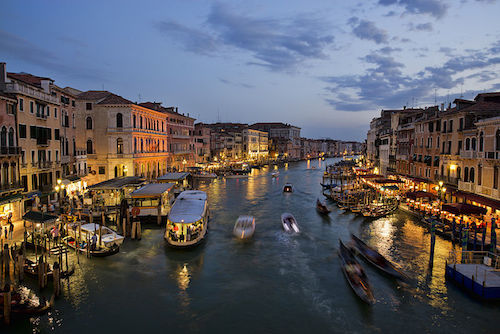9 Surprising Facts About the Italian Language
Italy’s rich history, beautiful architecture, and delicious food are all reasons that it’s one of the world’s most sought-after tourist destinations. Especially in the realm of fine arts, many of history’s most famous figures have hailed from Italy, including Leonardo da Vinci and Michelangelo. Indeed, everyone can identify the Mona Lisa, but do you know anything about the language that these famous artists spoke? For instance, did you know that Italy is the official language of classical music, or that its oldest text is over 1000 years old? Read on to find out more interesting and surprising trivia about Italian.
 Image via Chensiyuan / Wikipedia
Image via Chensiyuan / Wikipedia
1. Italian didn’t become a single, official language until 1861.
Though various dialects of Italian have been around for centuries, it wasn’t until Italy unified that a standard version of the language emerged. In 1861, only about 2.5% of Italy’s population could speak what is now known as standard Italian.
2. The alphabet contains only 21 letters.
Like other Romance languages (and English), Italian uses Roman characters. However, it contains five fewer letters than English: it lacks the letters j, k, w, x, and y. If you see these letters in an Italian text, it means the word has been borrowed from another language.
3. The word “volt” comes from an Italian inventor.
Everyone knows that Thomas Edison invented the lightbulb, but his invention would be useless if it weren’t for Alessandro Volta, who discovered electricity. “Volt”, the standard measuring unit of electricity (in both English and Italian), comes from his name.
4. The earliest Italian-language text is over 1000 years old.
The Placiti Cassinesi are four juridical documents written sometime between the years 960 and 963, and are considered to be the first written documents in the Italian language. They deal with a land dispute between three Benedictine monasteries and a local landowner.
How good is your Italian? Find out by taking our free online Italian level test!
5. In the 14th century, the writer Dante Alighieri single-handedly provided rules for written Italian.
Dante Alighieri is most famous for his Divine Comedy (colloquially referred to as “Dante’s Inferno”), in which he takes the reader through inferno, purgatory, and paradise. His extensive writings were used as the basis for written Italian, and thus many style and grammar rules of the Italian language derive from his works.
6. Italian dialects can be dramatically different from each other.
The standard dialect of Italian is based on the Tuscan dialect. However, there are several regional dialects in Italian, and some of them are so different from each other that they’re not mutually intelligible. In fact, some linguists have proposed that the Sicilian dialect should be classified as its own language.
7. Italian is the official language of classical music.
If you’ve ever seen a classical music score, you’ve probably come across terms like crescendo (get louder), staccato (detached), and forte (loud), all of which come from Italian. This is because musical notation was invented in Italy during the Renaissance, and thus became the standard language used in classical music.
 Image via Pixabay
Image via Pixabay
8. Italian isn’t just spoken in Italy.
Though the majority of Italian speakers reside in Italy, Italian also holds official or co-official language status in San Marino, Switzerland, Slovenia, and Vatican City. Italian is also the second-most spoken language in Argentina, and has a sizable population of native speakers in the United States.
9. The longest word contains 29 letters.
The longest word in Italian is the 29-letter esofagodermatodigiunoplastica, which refers to a reconstructive surgery related to the removal of the stomach. A better-known monstrous word is precipitevolissimevolmente, which means “very fast”, though it has “only” 26 letters.
You may have seen or even visited the Sistine Chapel, but we bet you didn’t know what the longest Italian word was!
Of course, there’s a lot more to learn about Italian aside from its longest word. If you’d like to know more about this language that was spoken by so many of history’s greatest geniuses, you should think about taking tailor-made Italian lessons from a native-speaking teacher. Send us a quick inquiry to learn more becoming fluent in Italian.


